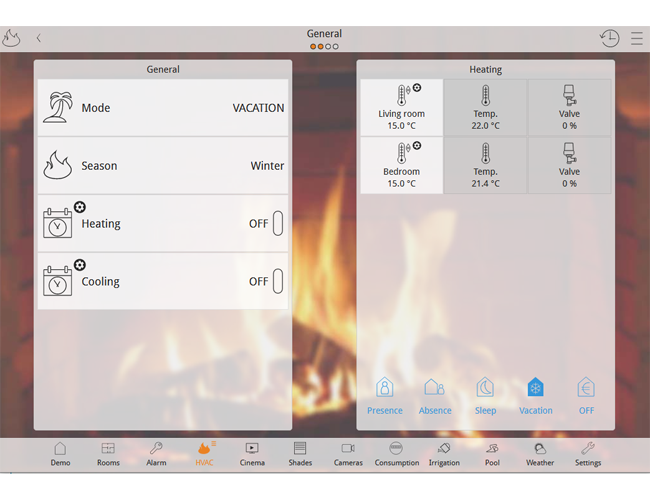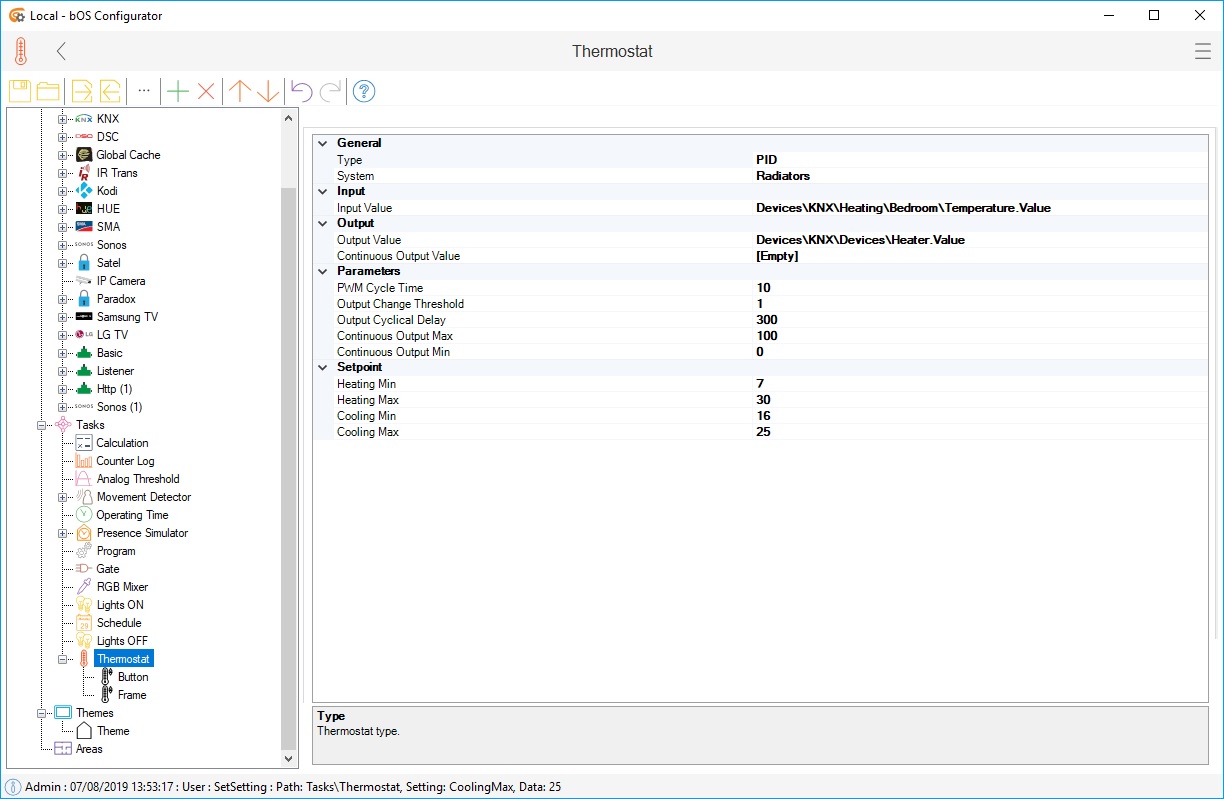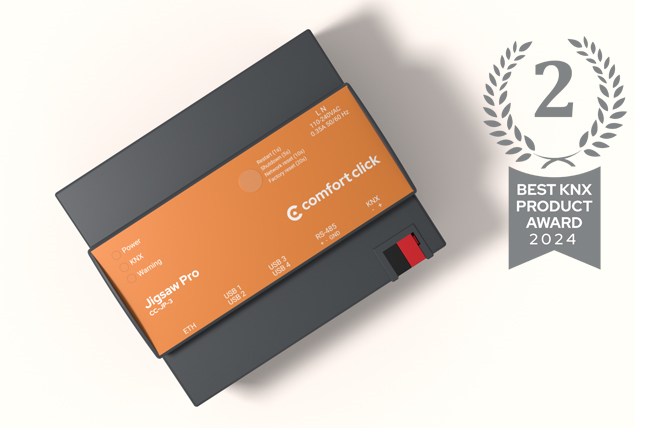

Thermostat
Thermostat is used for 2-point (ON/OFF) switching control of heating/cooling output depending on the current room and setpoint temperature.
Thermostat
Thermostat is used for 2-point (ON/OFF) switching control of heating/cooling output depending on the current room and setpoint temperature. Input Value can be linked to an object value representing the current room temperature. Output Value can be linked to an object value representing the heating output.

Picture 1: Thermostat node
Enabled, Mode and Setpoint values can be changed from the user interface or from other tasks. Output Value can be shown on the user interface or used in other program tasks. Type two types of thermostat can be selected:
Switching: 2 - point ON/Off thermostat with hysteresis
PID: PID continuous control of the output (0-100%)
The Mode defines the heating or cooling mode of the thermostat. If the thermostat is in heating mode, Output Value is set to true and the heater turns on. When Input Value is equal or lower than Setpoint - Hysteresis, Output Value is set to false and the heater turns off. In cooling mode this functionality is reversed.
Continuous Output Value is used for controlling heater or valves from 0 to 100%.
Minimum and maximum setpoint values can be set for heating and cooling. Thermostat also has 2 panels pre built, Button and a complete frame for the configuration.
Examples
Download example from our Library: Thermostat
Example 1: Control electrical heater in a room with a temperature sensor
Link the Input Value to the temperature sensor.
Link the Output Value to the heater.
Create logic (e.g. in Program or Schedule tasks to control the thermostat Enabled and Mode settings).
Create user interface.


